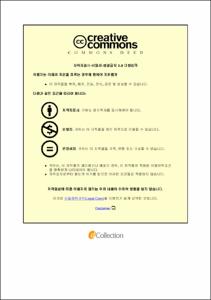패혈증을 동반한 외과 중환자의 임상적 경과에 따른 휴식기 열량요구량의 변화에 대한 분석: 전향적 관찰연구
- Alternative Title
- Analysis of resting energy expenditure according to the clinical course in critically ill surgical patients with sepsis: A prospective observational study
- Abstract
- <서론>
중환자에게 적절한 영양을 공급하는 것은 환자의 회복에 있어 중요한 역할을 한다. 패혈증을 동반한 중환자의 경우 감염에 대한 체내의 대사 반응과 소생술 등으로 인해 시간의 흐름에 따라 대사 반응이 다양하게 나타난다. 패혈증 초기에는 과대사작용이 일어나기 때문에 측정된 열량요구량을 동일하게 주게 되면 열량의 과잉공급을 유발할 수 있다. 따라서, 임상 경과에 따른 환자의 열량요구량 변화를 이해하는 것이 중요하다. 이 연구의 목적은 패혈증을 동반한 외과계 중환자에서 간접 열량측정법을 통해 패혈증의 각 시점에 따른 열량요구량의 변화를 분석하고자 한다.
<연구방법>
본 연구는 외과계 중환자실에 입실한 패혈증 환자를 대상으로 전향적으로 분석하였다. 중환자실 입실 후 1 일, 3 일, 7 일째에 간접 열량측정계를 통하여 휴식기 열량요구량(Resting energy expenditure, REE)과 호흡계수(Respiratory quotient, RQ)를 측정하였다. 각 시점에서 측정된 휴식기 열량요구량과 호흡계수의 변화를 비교하였다. 또한, 간접 열량측정계로 얻어진 휴식기 열량요구량과 중환자실에서 기존에 많이 사용되던 예측식(Weight-based, Harris-Benedict, Ireton-Jones, Penn state 2003 equation)으로 얻어진 결과값을 각 시점에서 비교하였다. 마지막으로, 3 일째 측정된 열량요구량을 기준으로 70%이상 적절하게 열량이 공급된 군과 그렇지 않은 군의 호흡계수의 변화를 분석하였다.
<결과>
측정된 휴식기 열량요구량은 1 일차에 가장 높았고, 3 일차에 감소하였고, 7 일차에는 큰 변화가 없었다 (Day 1 vs. Day 3: 24.29 ± 3.72 vs. 22.42 ± 3.72 kcal/kg/day, p=0.045; Day 3 vs. Day 7: 22.42 ± 3.72 vs. 23.26 ± 5.78 kcal/kg/day, p=0.514). 호흡계수는 3 일차에 가장 낮았고, 영양이 공급되면서 7 일차에 유의하게 증가하였다 (Day 3 vs. Day 7: 0.67 ± 0.05 vs. 0.71 ± 0.06, p=0.005). 4 개의 예측식과 간접 열량측정계를 통한 휴식기 열량요구량의 상관관계를 비교하였을 때 Penn state 2003 equation 이 각 지점에서 가장 높은 일치도를 보였고, 시간이 지남에 따라 감소하는 경향을 보였다 (Penn state 2003 equation ICC: Day 1 – 0.71, Day 3 – 0.65, Day 7 – 0.53). 중환자실 입실 4 일부터 6 일까지 공급된 열량이 3 일째 측정된 열량요구량의 70%이상 공급된 군에서 호흡계수가 유의하게 증가하였다 (Day 3 vs. Day 7: 0.67 ± 0.03 vs. 0.72 ± 0.05, p=0.002).
<결론>
휴식기 열량요구량의 변화는 분해대사작용이 활발한 입실 초기에 가장 높고, 안정기에 접어들면서 감소하는 것을 알 수 있다. 호흡계수의 경우 열량이 공급됨에 따라서 점차 증가하는 것을 알 수 있다. 패혈증 초기의 경우 과대사반응으로 환자의 상태를 정확하게 반영하기 어렵기 때문에, 환자가 안정기에 접어들었을 때 간접 열량측정계를 통하여 적절한 열량을 분석하고, 공급하는 것이 필요하다. 또한, 간접 열량측정계의 측정값과 예측식을 통한 열량요구량은 차이가 있기 때문에 간접 열량측정계를 통하여 환자의 정확한 열량요구량을 분석하는 것이 필요하다.|
Proper nutritional support in critically ill patients is crucial for recovery. In critically ill patients with sepsis, metabolic responses change over time due to the host response to infection and resuscitation. Because hypermetabolism occurs in the early period of sepsis, providing the same measured energy requirement may cause excessive supply of calories. Therefore, it is important to understand the changes in energy requirements according to the clinical course. This study aimed to investigate alterations in energy requirements based on the clinical course of sepsis in patients admitted to the surgical intensive care unit (SICU) using indirect calorimetry.
This prospective study analyzed patients with sepsis admitted to the SICU. Resting energy expenditure (REE) and respiratory quotient (RQ) were assessed through indirect calorimetry on days 1, 3, and 7 after intensive care units (ICU) admission. Changes in REE and RQ measured at each time point were compared. The REE values measured through indirect calorimetry were compared at each time point with the results obtained by predictive equations (weight-based, Harris–Benedict, Ireton– Jones, and Penn State 2003) commonly used in the ICU. Additionally, changes in the respiratory quotient were analyzed between groups that received more than 70% of the energy requirement by the 3rd day and those that did not.
The measured REE value was the highest on day 1 and remained unchanged on days 3 and 7 (day 1 vs. day 3: 24.29 ± 3.72 vs. 22.42 ± 3.72 kcal/kg, p = 0.045; day 3 vs. day 7: 22.42 ± 3.72 vs. 23.26 ± 5.78 kcal/kg, p = 0.514). RQ decreased slightly on day 3 but increased on day 7 after caloric intake (day 1 vs. day 3: 0.69 ± 0.06 vs. 0.67 ± 0.05, p = 0.218; day 3 vs. day 7: 0.67 ± 0.05 vs. 0.71 ± 0.06, p = 0.005). Comparing the correlation between the four predictive equations and the measured REE values, the Penn State 2003 equation demonstrated the highest correlation at each time point, although it showed a decreasing trend over time (Penn State equation ICC: day 1, 0.71; day 3, 0.65; day 7, 0.53). In the group receiving >70% of the measured REE values on day 3 for 4–6 days after ICU admission, the RQ value increased significantly (day 3 vs. day 7: 0.67 ± 0.03 vs. 0.72 ± 0.05, p = 0.002).
REE are highest in the early period of ICU admission due to increased metabolic response and decrease as patients stabilize. The RQ rises as caloric intake increases. In the early period of sepsis, it is difficult to accurately reflect the patient’s energy requirement due to hypermetabolic response, so it is necessary to determine appropriate energy requirement through indirect calorimetry when the patient stabilizes. Because there is a difference between the values obtained from indirect calorimetry and those estimated by predictive equations, it is necessary to measure the energy requirements through indirect calorimetry.
- Issued Date
- 2024
- Awarded Date
- 2024-08
- Type
- Dissertation
- Keyword
- Indirect calorimetry; Sepsis
- Alternative Author(s)
- Lee Hak Jae
- Affiliation
- 울산대학교
- Department
- 일반대학원 의학과
- Advisor
- 홍석경
- Degree
- Doctor
- Publisher
- 울산대학교 일반대학원 의학과
- Language
- kor
- Rights
- 울산대학교 논문은 저작권에 의해 보호받습니다.
- Appears in Collections:
- Medicine > 2. Theses (Ph.D)
- 파일 목록
-
-
Download
 200000806972.pdf
기타 데이터 / 2.75 MB / Adobe PDF
200000806972.pdf
기타 데이터 / 2.75 MB / Adobe PDF
-
Items in Repository are protected by copyright, with all rights reserved, unless otherwise indicated.